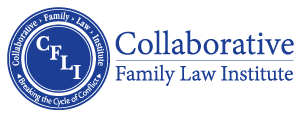Here is a description of the Mental Health Facilitator’s role in the Collaborative Process and a list of five ideas to use them for an enhanced experience.
Lana M. Stern, Ph.D., Miami, Florida, lmsternphd@aol.com, www.drlanamstern.com
As the Facilitator in Collaborative Divorce, a Mental Health Professional addresses the multifaceted emotional issues faced by divorcing spouses in arriving at a marital settlement. A Facilitator’s role is a necessary factor in the successful completion of a Collaborative Divorce. Divorcing is one of the most emotionally stressful events that an individual or family will experience due to conflicting emotions and changes that occur on multiple levels. It is for many, a time of loss, which begins with the acknowledgment that the marriage is over and continues as the family recovers, reorganizes, and restructures relationships. It is both an end and a beginning and holds sadness and hope for those involved. Mental Health Facilitators enable this transition to proceed between divorcing spouses while minimizing stress and pain.
The emotional component of divorce is the most potent force that steers the course of the divorce. There are many ways to divorce; most of them involve painful changes to the family structure often superimposed in hostile, stressful circumstances with long-term financial and emotional consequences. The Collaborative Process offers an alternative, non-litigated, non-adversarial process. Cool heads may best understand and accept the financial implications consequences of dividing up the family fortune or doing what is in the best interest of the children. Yet, a spouse’s emotions can disrupt brainstorming or the ultimate resolution of the marriage. A divorcing couple is empowered to design their unique resolution, and post-divorce familial relationships are enhanced relative to the traditional divorce process.
The Facilitator understands human behavior and can model good communication skills but is also alert to emotional issues that can potentially derail a negotiation between spouses, including addictions, domestic violence, domestic psychological abuse, shadow people, and power imbalances. Through underlying relationship dynamics, Facilitators can enable effective interest-based negotiations and open communications between the spouses and that remove roadblocks to settlement.
As clients, here are some ideas to gain optimal benefits from the Facilitator on a Collaborative Team:
Step One: Involve a Facilitator from the beginning of the Collaborative Process. Ask for a meeting between the Facilitator and the divorcing spouses before the first Team meeting to create a safe and comfortable communication environment. The purpose of the Facilitator’s initial interview with both divorcing clients is to get to know them, to understand their dynamics and communication skills, and to understand what their sensitive areas are in their relationship. The Facilitator’s observations will be thoughtfully considered by the Collaborative Team to structure meaningful agendas and enable an effective Collaborative Process.
Step Two: Share feedback with the Facilitator regarding the Collaborative Team Meetings or stumbling blocks that you are experiencing. The feedback received by the Facilitator is helpful to gain insight in a nonconfrontational manner in setting future agendas for the Collaborative Team meetings and to formulate relevant and useful topics of discussion.
Step Three: Ask the Facilitator questions about how to address sensitive issues or dynamics with the other spouse in the process. Facilitators are great educators about potential emotional problems that may be triggered by topics raised during the team meeting.
Step Four: Facilitators can also help resolve time-sharing and associated child support issues during the Collaborative Process upon receiving input from the neutral financial professional.
Step Five: Facilitators are great listeners. If you are feeling frustrated with any aspect of the Collaborative Process, venting about the issues can be of great relief and can clarify the problem. Once identified, a problem is usually solvable by the Collaborative Team.
The Facilitator can intervene in simple misunderstandings and real crises by helping with problem-solving, creative thinking, and serving as a support system for the divorcing spouses throughout the Collaborative Process. A Facilitator’s neutrality creates a safe place for understanding the underlying currents to be processed before they disrupt the Collaborative Process. Apply the five ideas with the Facilitator to enhance your experience in the Collaborative Process.
